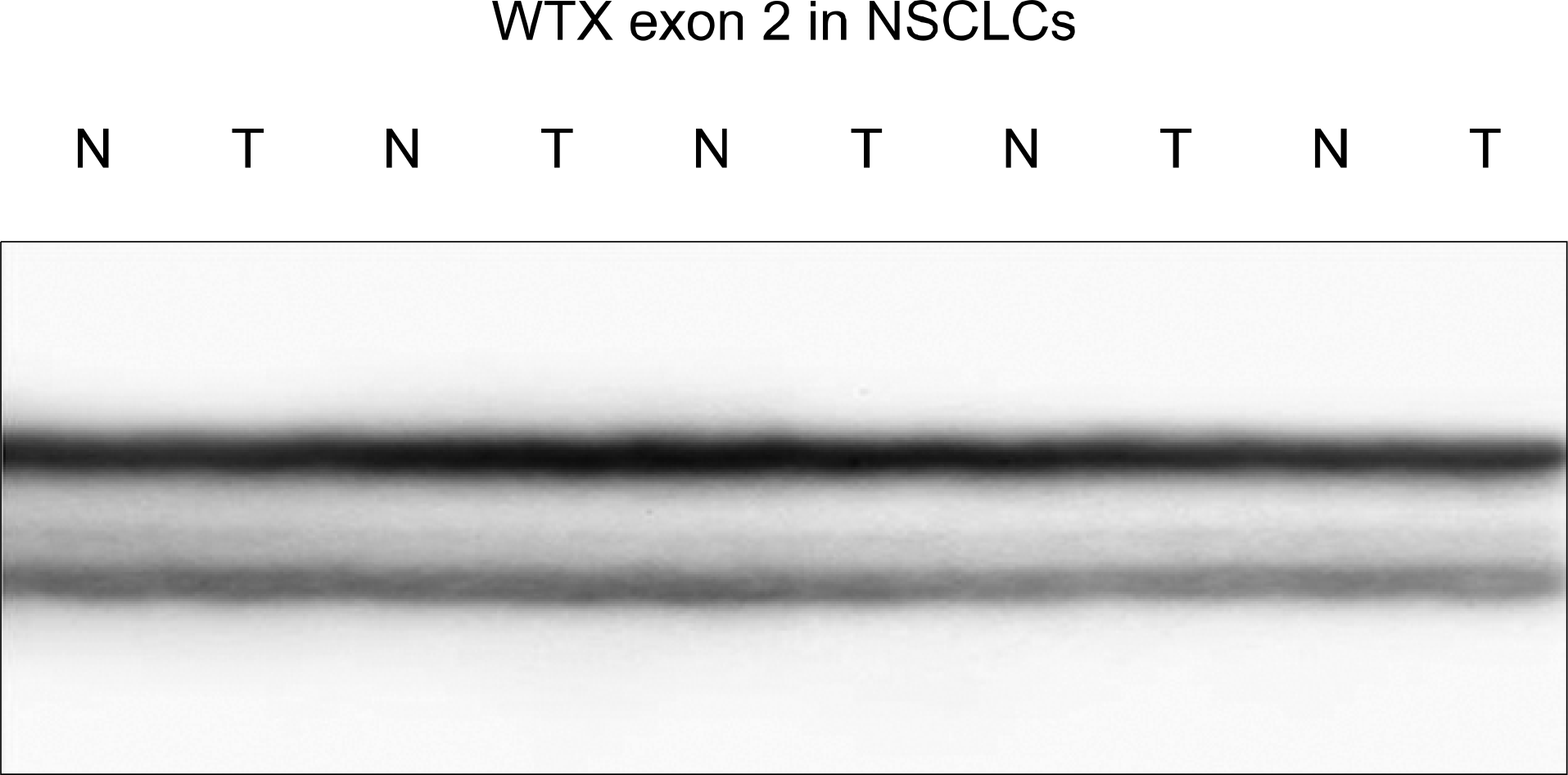Abstract
Purpose
In a recent study of Wilms' tumors, a new X chromosome gene, Wilms' tumor gene on the X chromosome (WTX), was discovered that was found to harbor small deletions and point mutations. The WTX protein negatively regulates Wnt/β-catenin signaling, and is considered to be a tumor suppressor gene. One of the questions about the WTX gene is whether the genetic alterations of the WTX gene are specific only to Wilms' tumors. The aim of this study was to explore whether the WTX gene mutation is a characteristic of human non-small cell lung cancer (NSCLC).
Materials and Methods
In the current study, we analyzed the part of the WTX gene encoding the N-terminal of WTX, where most of the WTX point mutations have been detected in Wilms' tumors. Forty-eight NSCLC tissues were analyzed by a single-strand conformation polymorphism assay and DNA sequencing.
References
1. Rivera MN, Kim WJ, Wells J, et al. An X chromosome gene, WTX, is commonly inactivated in Wilms tumor. Science. 2007; 315:642–645.
2. Major MB, Camp ND, Berndt JD, et al. Wilms tumor suppressor WTX negatively regulates WNT/beta-catenin signaling. Science. 2007; 316:1043–1046.
3. Koesters R, Ridder R, Kopp-Schneider A, et al. Mutational activation of the beta-catenin proto-oncogene is a common event in the development of Wilms' tumors. Cancer Res. 1999; 59:3880–3882.
4. Koesters R, Niggli F, von Knebel Doeberitz M, Stallmach T. Nuclear accumulation of beta-catenin protein in Wilms' tumours. J Pathol. 2003; 199:68–76.
5. Clevers H. Wnt/beta-catenin signaling in development and disease. Cell. 2006; 127:469–480.
6. Van der Flier LG, Sabates-Bellver J, Oving I, et al. The intestinal Wnt/TCF signature. Gastroenterology. 2007; 132:628–632.

7. Mazieres J, He B, You L, Xu Z, Jablons DM. Wnt signaling in lung cancer. Cancer Lett. 2005; 222:1–10.

8. Soung YH, Lee JW, Kim SY, et al. Somatic mutations of CASP3 gene in human cancers. Hum Genet. 2004; 115:112–115.

9. Lee SH, Shin MS, Park WS, et al. Alterations of Fas (Apo-1/CD95) gene in nonsmall cell lung cancer. Oncogene. 1999; 18:3754–3760.

10. Lee SH, Shin MS, Kim HS, et al. Alterations of the DR5/TRAIL receptor 2 gene in nonsmall cell lung cancers. Cancer Res. 1999; 59:5683–5686.
11. Shin MS, Kim HS, Lee SH, et al. Alterations of Fas-pathway genes associated with nodal metastasis in nonsmall cell lung cancer. Oncogene. 2002; 21:4129–4136.
12. Lee JW, Soung YH, Nam SW, Lee JY, Yoo NJ, Lee SH. Mutational analysis of proapoptotic BAD gene in nonsmall cell lung cancer. J Lung Cancer. 2006; 5:35–38.
13. Soung YH, Lee UW, Moon SW, et al. Mutational analysis of caspase-7 and 8 genes in nonsmall cell lung cancer. J Lung Cancer. 2005; 4:38–41.
Figures and Tables
Fig. 1.
Representative SSCP of the WTX gene in non-small cell lung cancers. A part of exon 2 of the WTX gene was amplified by PCR using a specific primer set. The PCR products from the representative cases of non-small cell lung cancers were visualized on SSCP. SSCPs of DNA from the non-small cell lung cancers (T) show no aberrant bands as compared to SSCPs from normal tissues (N). SSCP: single-strand conformation polymorphism.

Table 1.
Primer Sequences of WTX Gene Used in This Study




 PDF
PDF ePub
ePub Citation
Citation Print
Print


 XML Download
XML Download